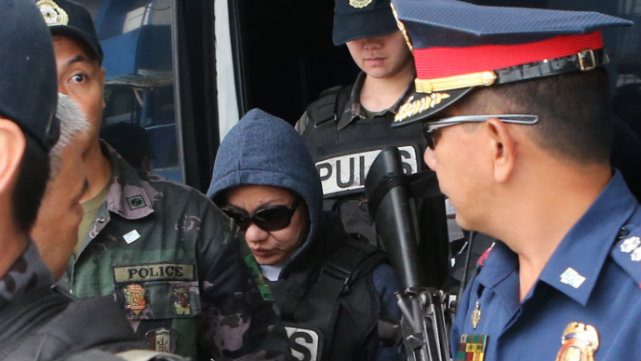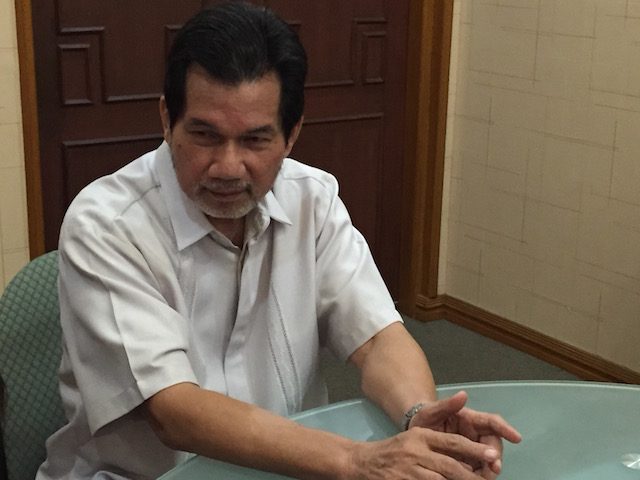SUMMARY
This is AI generated summarization, which may have errors. For context, always refer to the full article.

MANILA, Philippines – The Philippine Department of Justice sought the help of the US embassy to look into the assets of Janet Napoles, the suspected mastermind of a grand scheme that involved the illegal diversion of millions of pesos in public funds.
Justice Undersecretary Jose Justiniano told Rappler on Wednesday, June 15, they met with the embassy’s legal attache in mid-2014. “Natatandaan ko, nagkaroon kami ng meeting ng mga taga-US embassy, ’yung legal attaché nila, at nangako naman silang tutulong basta merong tinatawag na MLAT [Mutual Legal Assistance Treaty]…na ‘yun na nga ang basehan ng pagtulong sa amin.”
(I recall we had a meeting with the US embassy, including their legal attaché, and they promised to help so long as we had the MLAT [Mutual Legal Assistance Treaty] as basis for their helping us.) Justiniano was joined by officials of the National Bureau of Investigation in that meeting where they told US officials that the Napoles loot was “probably in the US.”
The treaty between the Philippines and the US provides for the “sharing of information and evidence related to criminal investigations and prosecutions, including drug trafficking and narcotics-related money laundering. Both parties are obligated to assist in the investigation, prosecution and suppression of offenses in all forms of proceedings (criminal, civil or administrative).”
On Tuesday, July 14, the US justice department moved to seize $12.5 million (P565 million) in assets of Napoles. It filed a civil forfeiture complaint to gain control over her assets that include a unit at the ritzy Ritz-Carlton in Los Angeles estimated to be worth P80 million, a motel near Disneyland, and a Porsche Boxter purchased for her daughter.
Napoles is believed to have masterminded the scheme that involved siphoning lawmakers’ Priority Development Assistance Fund or pork barrel to fake non-governmental organizations associated with her. Both Napoles and lawmakers collected commissions from the transactions.

Justiniano said the civil forfeiture complaint allows the US government to go after stolen assets and wealth brought to, or purchased in, the US even by non-US citizens. The seized assets will be returned to the Philippine government once these are recovered.
Justice Secretary Leila de Lima also said the Philippine government is helping the US Department of Justice in its civil forfeiture case against Napoles. If and when they succeed, De Lima said the Philippine government will request that the money be turned over.
Strong case vs Napoles
This was the same thing that happened in the case of retired Philippine Army Major General Carlos Garcia whose assets were seized from his family members and forfeited in the US.
US Ambassador Philip Goldberg on June 3 turned over to the Ombudsman $1.38 million (P61 million) taken from the sale of Carlos’ forfeited assets. Garcia was a comptroller of the Armed Forces of the Philippines charged with plunder.
In the case of Napoles, Assistant Attorney General Leslie Caldwell was quoted as saying, “The justice department will not allow the United States to become a playground for the corrupt or a place to hide and invest stolen riches.”
Asked whether the move of the US justice department will strengthen the case against Napoles, Justiniano said that at present, “with or without the discovery of these assets ay malakas naman ang kaso (the case remains strong).”
De Lima also said it would “complement and bolster our cases, both the civil case for forfeiture before the RTC [Regional Trial Court] and the plunder and graft cases before the Sandiganbayan.”
Justiniano added that the testimonies from whistleblowers detail how Napoles used non-governmental organizations to implement transactions between her and legislators involving their pork barrel.
Asked how long the civil forfeiture case in the US could take, Justiniano said it could be as short as a year. “I suppose baka isang taon kayang tapusin…mabilis ang legal system nila kaysa sa atin.” (I suppose maybe they can finish in a year…their legal system is faster than ours.)
Did discussions with the US embassy officials touch on money laundering? Justiniano replied, “Isa yan sa mga na-touch namin although noong time na yun kasi wala kaming concrete evidence. Hindi naman talaga alam kung saan ba dinala ang pera…sinabi ng isang whistleblower…maaring tama, maaaring di totoo. ’Yung facts noon malabo na sa amin…habang tumatagal lumilinaw nang lumilinaw.”
(It was one of the things we touched on although at the time we didn’t have concrete evidence. We really didn’t know where the money was brought…one whistleblower said…it could be correct, it could be untrue. The facts then were unclear to us…but they’re becoming increasingly clearer now.)
Napoles is currently detained at the Correctional Institution for Women after being found guilty in April 2015 of serious illegal detention of principal whistleblower Benhur Luy. He had worked for her as chief finance officer in her own company, JLN Corporation.
She also faces 5 counts of plunder, 74 counts of graft, and 14 counts of malversation before the anti-graft court Sandiganbayan. – Rappler.com
Add a comment
How does this make you feel?
There are no comments yet. Add your comment to start the conversation.